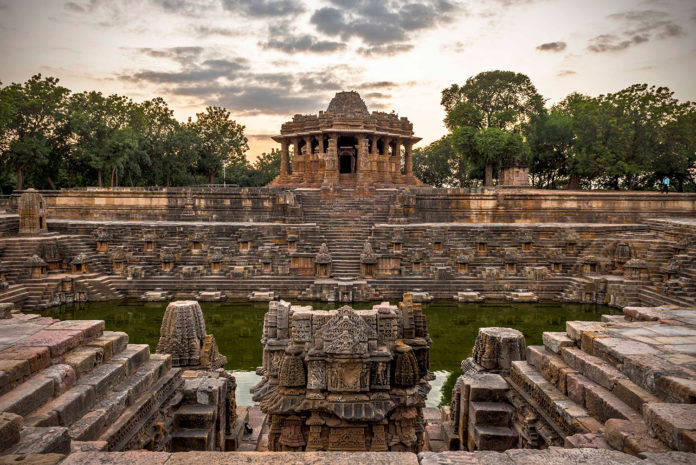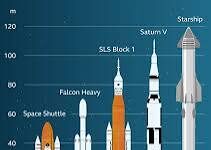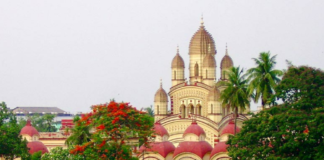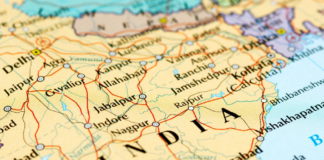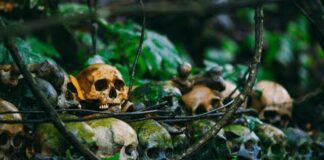In ancient times many famous sun temples were built for deity Sun. Modhera sun Temple is one of the famous and best examples of architecture wonder of 11th century. Sun temple at Konark has been constructed on wheels of chariot , Modhera has been constructed on layers of lotus flowers on sandstone. It was built by Solanki ruler Rishabh Bhimdev I in 1026 AD. Temple was completed in the 11th Century CE, but it was completed in phases. It was built 200 years before the Konark Temple of Odisha. Solankis were regarded as descendants of the Sun God, and were known as Suryavanshi Gurjars.
Its sandstone structure is amazing. Modhera temple is mentioned in scriptures like Skanda Purana and Brahma Purana. Surrounding area of Modhera was called as “Dharmaranya”, blessed by Lord Rama. These puranas mention that after defeating Ravana, Ram requested Muni Vasistha to tell a place for purifying himself, as he had a sin of Brahma Hatya (Killing of Brahmin). Muni Vasistha showed him a place which is near to Modhera of present days. He performed a yagya there and thereafter established a village named as Sitapur, now known as Modhera.
LOCATION-
It is in Modhera village, situated on the banks of Pashupati river. Nearest Station is Mehsana in Mehsana District of Gujarat, with a distance of 25 Kms. From Ahmedabad its distance is 98 Kms. Temple is located at 23.6 degree latitude, close to Tropic of Cancer Due to the marvelous architecture, first rays of the sun fall on the idol of god at the time of equinoxes. During summer the Sun shines directly on the temple top in such a way that it casts no shadows.
Now no worship is done as the main idol was destroyed by Mahmud Ghazni and the temple was destroyed by Allauddin Khilji and Mahmud Ghazni. It is a protected monument now and taken care by Archaeological Survey Of India.
Like many other sites in India, MOdhera was rediscovered by British Government. It was discovered by Col. M. Monier Williams. He mentioned it in his Survey report in 1809 when he was Surveyor General. Later on A. K. Forbes was the first person to provide a detailed description of the temple and draw its plan.
STRUCTURE OF TEMPLE-
Building of the temple has three parts- Surya Kund, Sabha Mandap, Guda Mandap.
SURYA KUND- Surya Kund has area of 100 sq meter and looks like well. It is a rectangular tank and steps follow the zig zag pattern. In four corners of it there is Ganesh Ji, Nataraja, Vishnu ji and Shitala Mata. Earlier it was used for bathing arrangements before beginning pooja. It has 108 Small temples in similarity with 108 lords.
SABHA MANDAP – After Surya kund there are two pillars, named Kirti Toran. Kirti represents respect and prestige earned by the kingdom at that time. After passing through Kirti toran there is sabha mandap constructed on 52 poles. These poles represent 52 weeks and have images from Ramayana and Mahabharata. In this mandap /gallery devotees used to sing songs and religious activities were done.
The journey from Kunda to Guda mandap via main temple is considered as journey from Death to Moksha
GUDA MANDAP OR MAIN TEMPLE- After crossing Sabha Mandap, there is main temple called as Gudu Mandap or Garbha Grah. Main temple is behind Sabha Mandap. One of the sun god sculptures is wearing gumboots due to Persian effects. This architecture has effects of both Chalukya style (Maru Gurjara) and Persian( Irani sthapatya shaili). Sculptures of women have many hairstyles and ornaments.
It has a tunnel which leads to Patan which is the headquarters of Solankis kingdom. In case of attacks or emergencies , kings and their families used this tunnel to escape
On the walls there are carvings of the Sun along with 4 other elements- air, water, earth and space. Main temple is situated on a sculpture which looks like an inverted lotus, It opens in sunlight and closes at sunset. Carvings on wall of main temple are astonishing and represent all stages of human life from birth to death. The walls also represent 12 styles of God Sun for 12 different months.
In most sculptures, Lord Surya has two lotuses in each hand. He is being driven by seven horses.Here sculptures teach us about Dharma, Artha, Kama and Moksha.
UTTARARDHA MAHOTSAVA-
Every January, there is a festival of the Modhera Dance Festival . It is celebrated in the third week of January. This event promotes tourism and is organised by Gujarat tourism. It is a three day festival and also known as Uttarardha Mahotsav, it is celebrated after the festival of Uttarayan. This festival is celebrated in same manner as was done in ancient time..



